Artist Shih Chieh Huang (TED Talk: Sculptures that’d be at home in the deep sea) takes everyday objects — plastic bottles, food containers, old computer parts, plastic garbage bags — and transforms them into surreal sea creatures. These creatures tower over the viewer and move as if they’re alive. Many have eyes that blink, tentacles that unfurl and bioluminescent parts that glow.
Huang found further inspiration for these pieces during a fellowship at the Smithsonian Museum of Natural History, where he studied bioluminescent organisms. “There are so many cool bioluminescent creatures, each with their own unique characteristics — the silver hatchetfish, the vampire squid, the flashlight fish,” says Huang. “One of the concepts I was inspired by: many bioluminescent creatures did not grow ‘new’ light organs. The light organs often evolved from a pre-existing organ — for the lanternfish, it was a mutated dorsal fin infected by bioluminescent bacteria.”
In this gallery, a closer look at some of Huang’s very cool creatures.
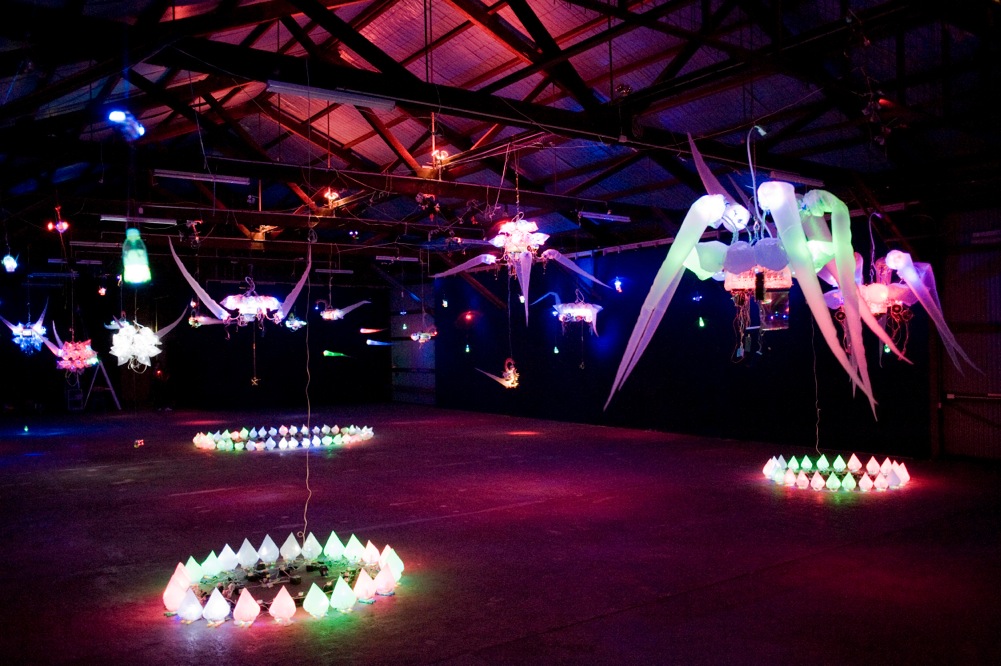
A sculptural survival of the fittest
Huang’s organisms compete for scarce resources in this installation that was part of the 2009 Arc Biennial of Art in Australia. Cubozoa-L-09, by Shih Chieh Huang, 2009. Photo courtesy of the artist.
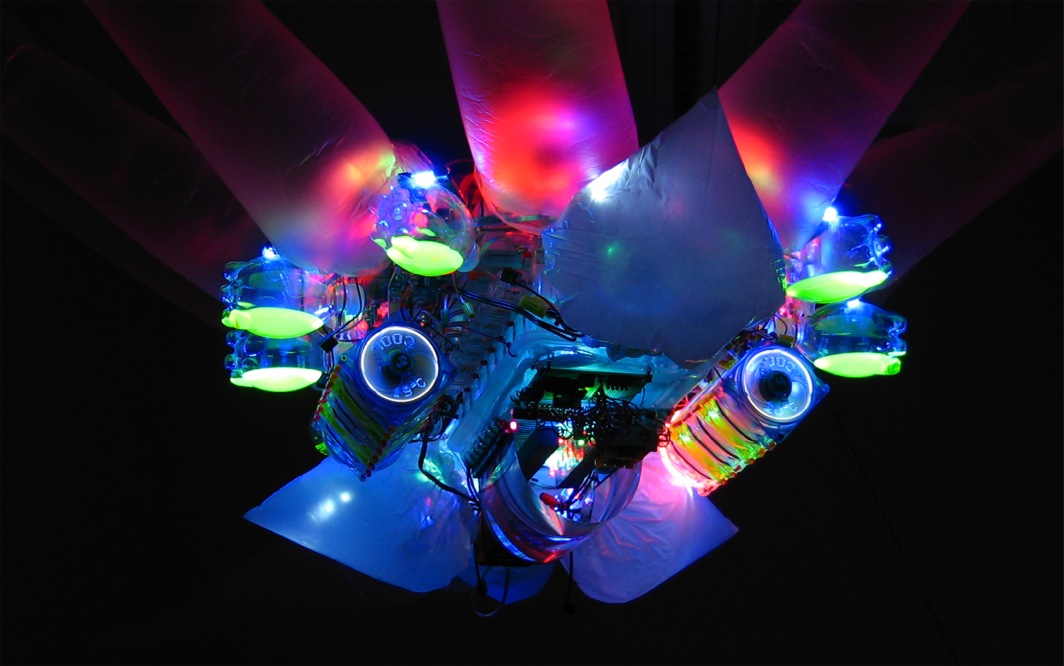
How plastic bags and computer fans come to life
A close-up of a creature made from plastic bags, computer cooling fans and a micro controller. “I’ve always been interested in animating household materials,” says Huang. “It’s fun to see them come alive and do things they’re not made to do.” ES-C-07, by Shih Chieh Huang, 2007. Photo courtesy of the artist.
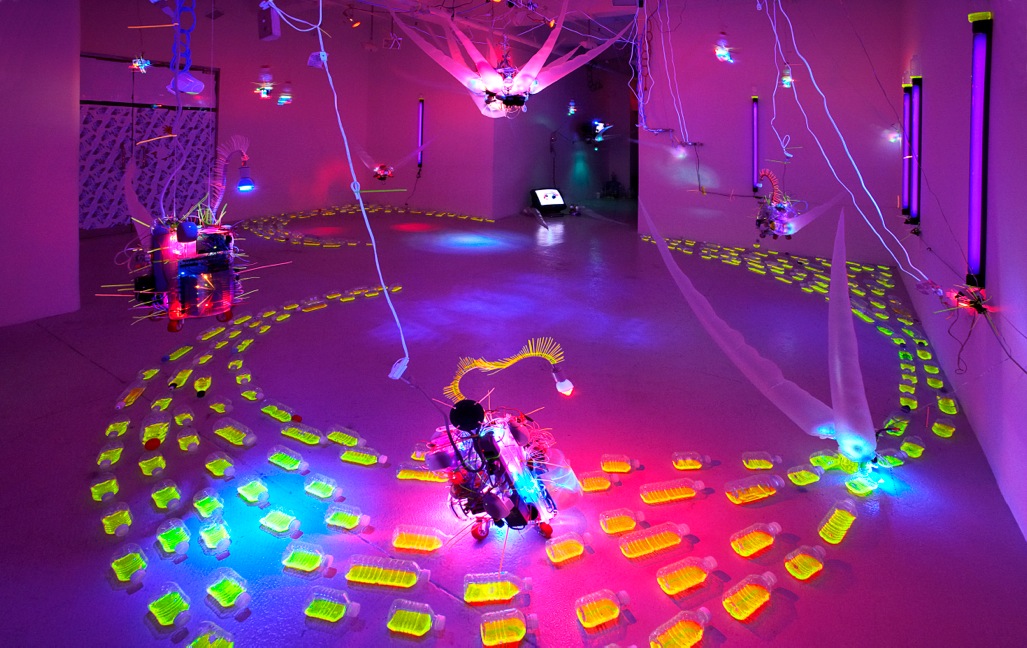
Art made from glowing, liquid highlighters
The liquid glowing in those plastic bottles? Huang uses highlighters to create that effect. EX-DD-06, by Shih Chieh Huang, 2006. Photo by Tom Powel.
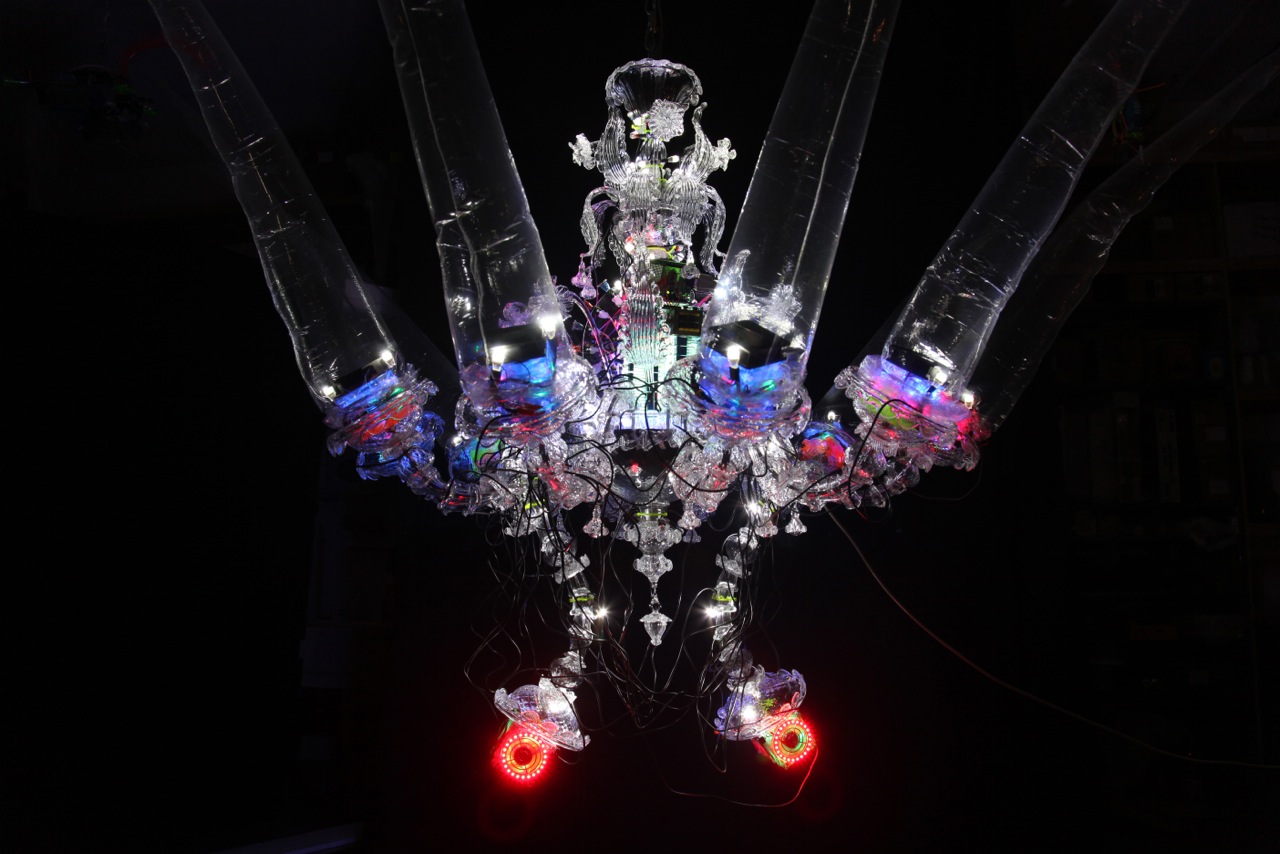
Household electronics are the new glass
Huang teamed up with glass masters from Venice, Italy, to modify a Renaissance-style glass chandelier with household electronics. Seductive Evolution of Animated Illumination, by Shih Chieh Huang, 2013. Photo courtesy of the artist.
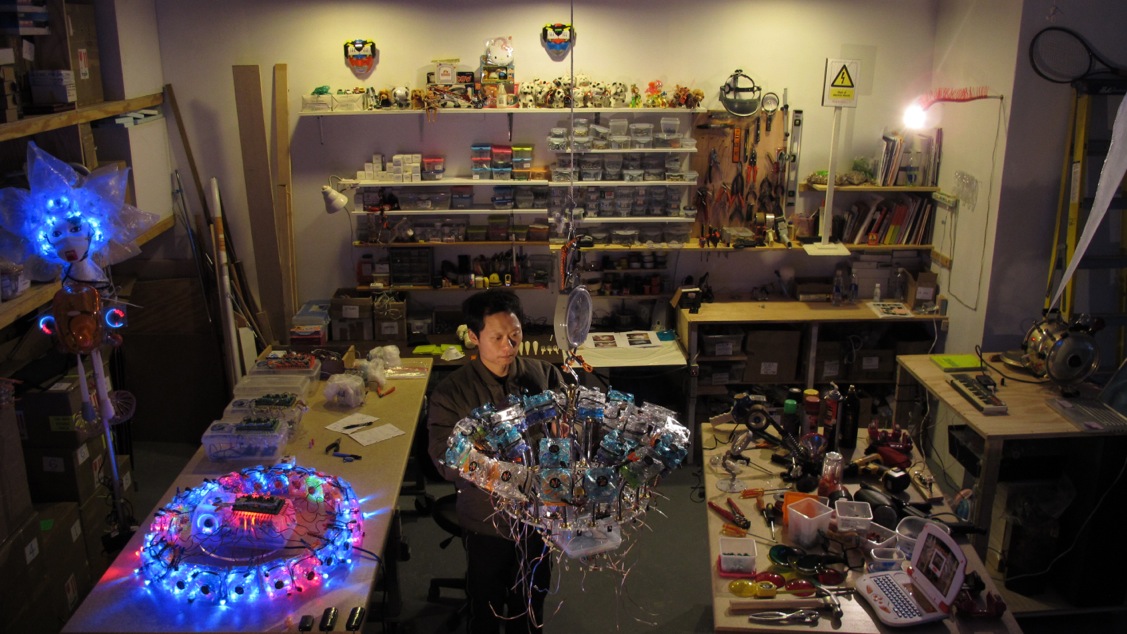
A look inside the studio that brings life to everyday objects
Huang at work in the studio, weaving light-up bottles together into an organism. His space is an organized cacophony of parts, materials and hardware. Photo courtesy of the artist.
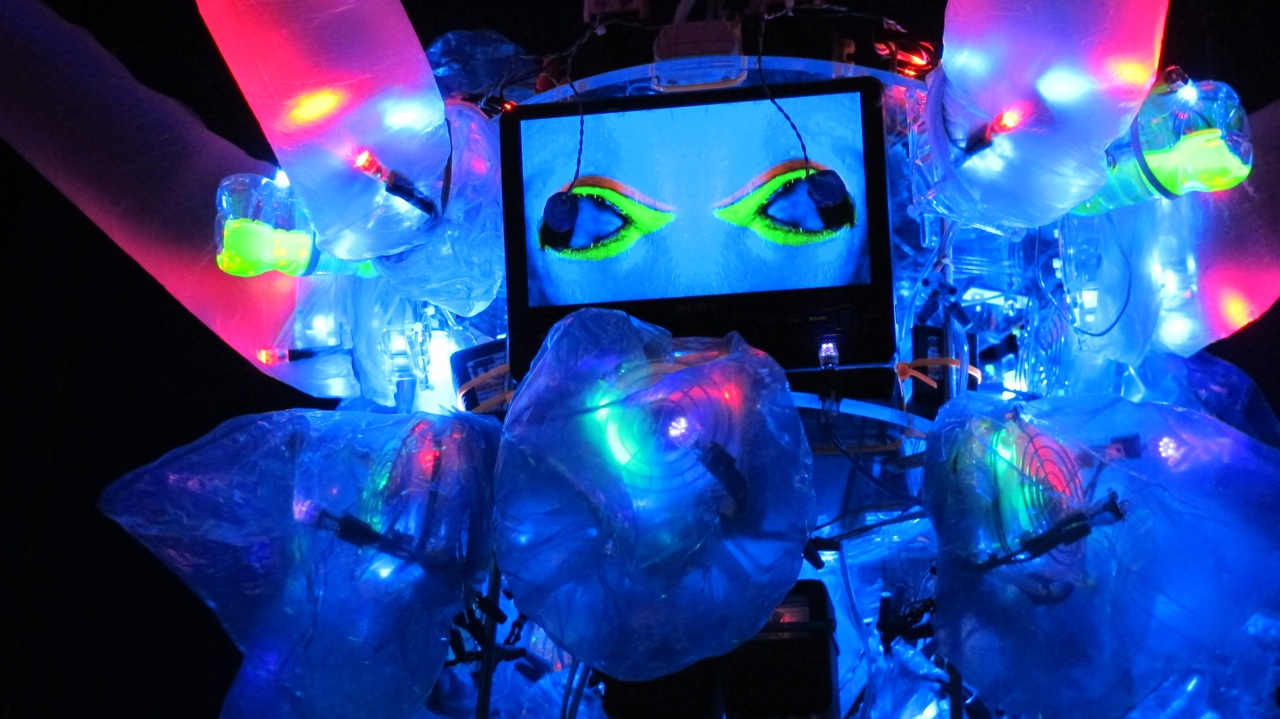
Up close with eyeballs and plastic bags
For this eerie organism, Huang recorded eye movements up-close, and nestled a screen to show the footage among inflated plastic bags and other household materials. “The idea of taking existing objects, merging them and making something new and magical is wonderful to me,” he says. EX-C-F 4 (YK-Eye), by Shih Chieh Huang, 2009. Photo courtesy of the artist.
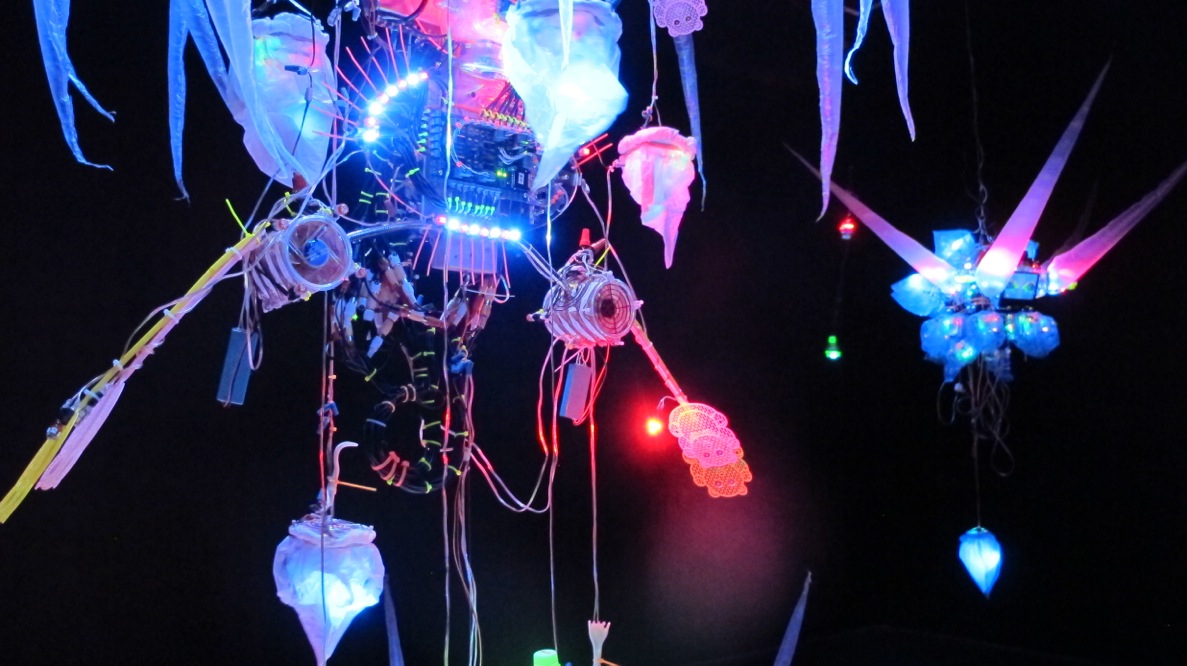
Science, meet art
Huang found inspiration studying bioluminescent creatures at the Smithsonian. “Many of the scientists had never worked with an artist before, and were hesitant to discuss and share their research initially,” he says. “But after showing them my artwork and taking some time to understand each other, many of them opened up. It was wonderful to get a glimpse of their world—to see their process and their work space.” Synthetic Seduction, by Shih Chieh Huang, 2013. Photo courtesy of the artist.
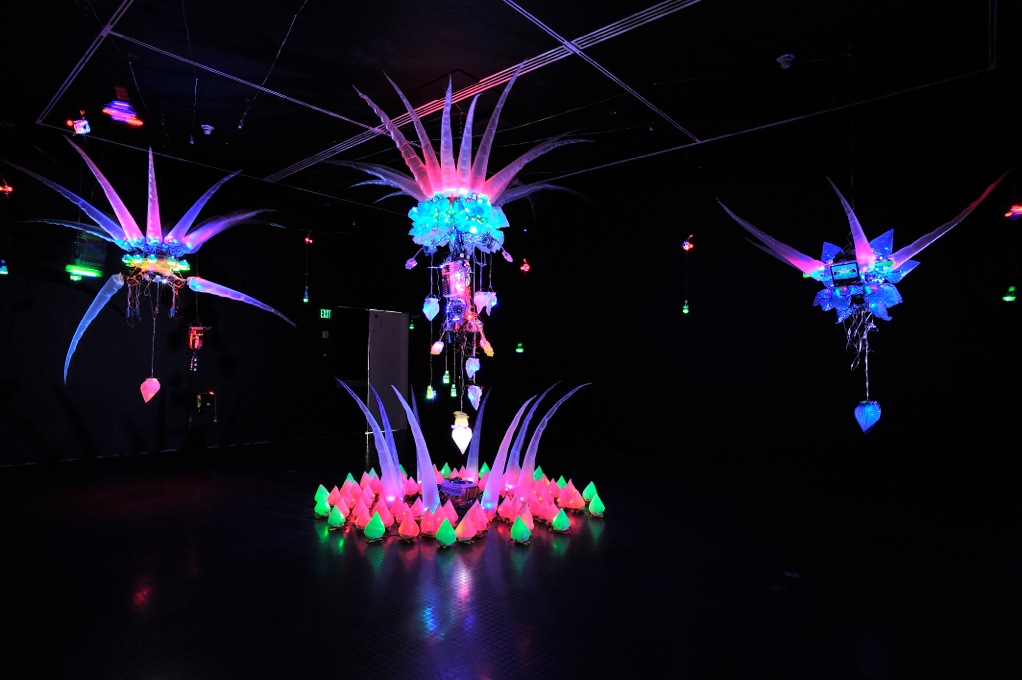
Tentacles: expressive, simple, sexy?
Tentacles are a major theme in Huang’s art. “They are used to explore the external world. Sea creature use them to feel, touch and communicate with one another,” says Huang. “They are very expressive, simple, sexy— and can be interpreted in many different ways.” Synthetic Seduction, by Shih Chieh Huang, 2013. Photo courtesy of the artist.
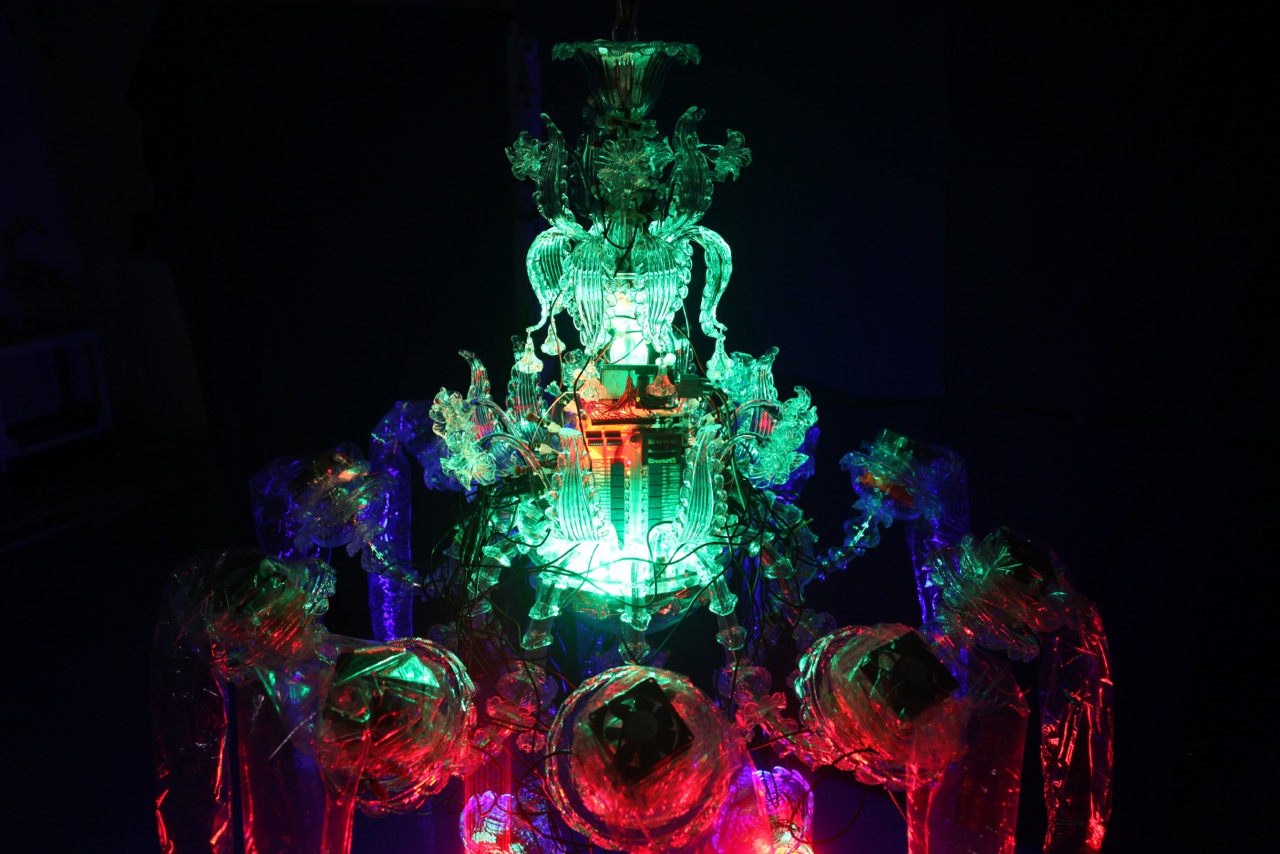
Contemporary art meets Murano masters
Another of Huang’s beautiful collaborations with the glass masters of Murano, a part of Venice famous for its glass-blowing. Seductive Evolution of Animated Illumination, by Shih Chieh Huang, 2013. Photo courtesy of the artist.
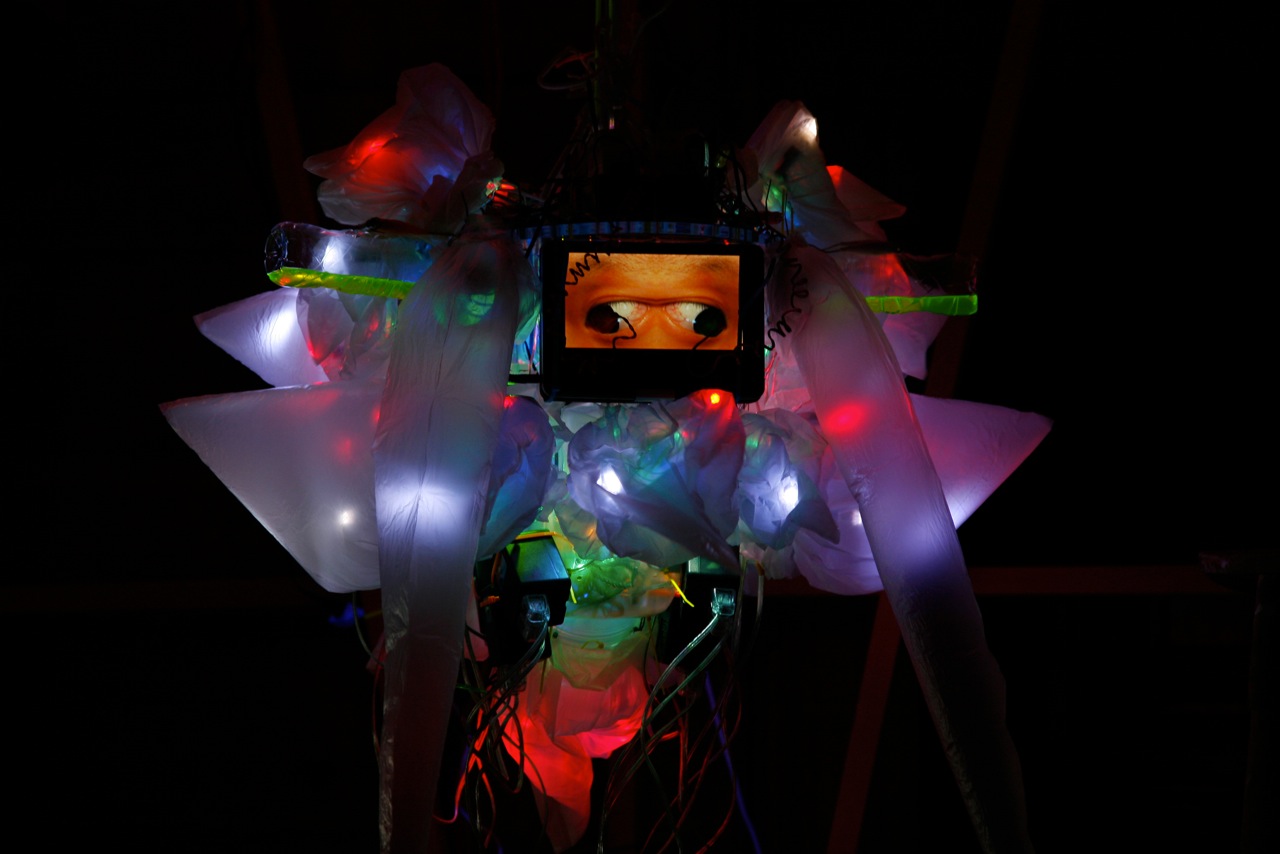
Art that really does catch the eye
Displayed in Italy, this piece also makes use of Huang’s surreal eye recordings. EX-C-F, by Shih Chieh Huang, 2007. Photo courtesy of the artist.
Shih Chieh Huang is a TED Fellow.










